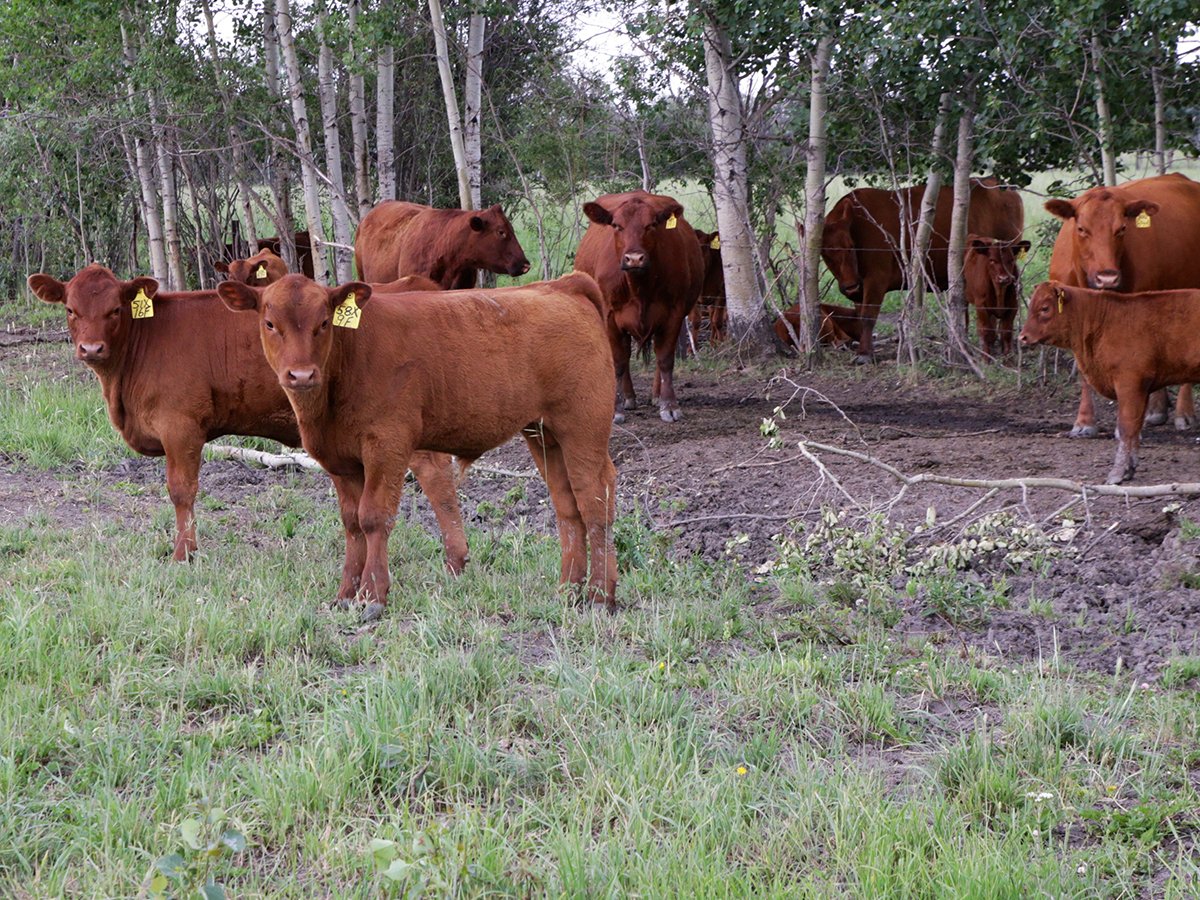Roller compacted concrete is becoming a key tool for maintaining a sustainable cattle feeding sector in Alberta.
Ten to 20 percent of Alberta’s feedlot industry has installed RCC, a material with the same ingredients as conventional concrete but applied as a drier mix without need for forms or finishing and compacted with rollers.
Feedlot owners say installation in cattle pens improves conditions and animal welfare while reducing costs associated with pen cleaning and maintenance.
Leighton Kolk, owner of Kolk Farms Ltd., said he invested because of the long-term economic benefits at his feedlots near Iron Springs, in the heart of southern Alberta’s feedlot alley.
Read Also

Feeder market continues the climb
For the week ending Aug. 30, Western Canadian feeder cattle markets traded $4-8 per hundredweight higher on average.
Kolk Farms recently completed the last phase of converting two 12,500- and 11,000-head feedlot yards from clay-lined to RCC.
“We started it eight years ago as a test project of a few pens and found it worked really well and decided to keep moving forward each year with a little more,” said Kolk.
RCC is a blend of cement, water, sand, aggregate and additives. It is mixed in different ratios and contains little water. Fly ash is added to replace a portion of the cement powder to reduce cost.
RCC is placed in pens and spread using heavy equipment, then compacted with vibrating rollers.
At $2 per sq. foot, Kolk said cost is the main hurdle, but there are several sustainable benefits compared to clay-floored pens.
“It improved animal foot health. It reduced foot injuries and foot problems, improved feed efficiency and gain, reduced pen maintenance and amount of manure produced per animal per year,” he said.
“When we added them all up, it makes economic sense to go that direction.”
Kolk Farms participated in a three-year study on RCC (2016-18) with Alberta Agriculture and Forestry that looked at the impact of RCC on cattle health and welfare, environmental and economic sustainability. Results showed improved animal welfare in terms of cleanliness and overall animal comfort, along with fewer lameness issues.
“There was a lot of different aspects and the whole focus of that study was about sustainability,” said Dr. Steve Hendrick of Coaldale Veterinary Clinic and one of the main participants involved in the research.
Hendrick said he was shocked at the improved performance and overall health of cattle.
Kolk found the same results.
“We had five to six percent reduction in hoof illness and lameness, which is very conservative at the time. We think (the reduction is) quite a bit higher than that,” said Kolk.
RCC also improves feedlot efficiency in terms of vaccines, implants and feed additives because the cattle gain better and attain better feed conversion.
“It’s not huge. We had cattle move from 3.2 pounds per day to 3.4 lb. per day. So, we had a five percent gain improvement. On our feed efficiency, we would probably see somewhere between two and three percent efficiency improvement once we moved the cattle into RCC pens,” said Kolk.
Hendrick had similar numbers on weight gain. “It was about a 10th (of a pound of average daily gain) or so less for cattle on RCC, so they weren’t huge differences but it’s a slight improvement. It’s enough of one that when you combine it with everything else was sort of seen as another win.”
The costs of cleaning and manure hauling have significantly decreased, as has the amount of manure hauled away, since it doesn’t contain clay that gets scraped up during the cleaning process.
“The carbon footprint side of things is reduced maintenance. We’re spending a lot less time doing maintenance to our pens. We’ve reduced our manure tonnage volume by about 30 percent and thus we’ve reduced the cost and energy by probably 30 to 40 percent on manure removal and transportation,” said Kolk.
Everything gets wet and muddy in a clay-lined pen floor.
“Moisture, hoofs and manure gets mixed with the soil, the clay. You end up hauling it out. Nobody wins on that because you brought that clay in, you’ve paid money to dig it out of somewhere, bring it in, lay it down, compact it, and then you turn around and haul it right back out.
“It doesn’t benefit the farmland. It doesn’t benefit the crops. It costs money and you have to go find it and replace it again. So, it’s a complete 100 percent loss every time you haul a pound of clay out of the pen.”
Hendrick said that can be a major issue.
“It’s a maintenance cost, but I think environmentally where is this clay coming from? A lot of guys just go out on their land somewhere and peel off some clay and rebuild the pens, but is that sustainable long term? Probably not.”
Compared to clay, RCC is superior particularly in spring when moisture levels tend to be highest.
“We run at 100 percent capacity year-round, whereas in the past, many yards would try and get down to a 75 percent or 80 percent capacity in the spring just because pen conditions can get so difficult and so tough if you have a wet spring,” Kolk said.
“That causes inefficiencies and economic loss. If you have a hotel and you can only keep it full for three quarters of the year and then you have to run at half capacity for some reason, that makes you uneconomical or sustainable that way.
“So, this way we don’t have to reduce numbers in the spring to deal with (wet) conditions… the same regardless of rain, snow or ice.”
While it’s difficult to measure, the people side of things also favours RCC, adds Kolk.
“It’s much easier working in that environment for humans that are taking care of the animals because they’re not dealing with mud and not dealing with mud puddles. It’s just a much nicer work environment for people, working cattle, moving cattle, checking cattle.”
Kevin Serfas has strategically installed RCC at his three feedlots near Turin, Alta., which hold a combined 53,000 head, about one year ago. Because of the upfront costs, he put RCC in one yard and in the highest traffic handling areas throughout.
“The biggest benefit that we see is the fact that we don’t lose our pen bottoms because it’s basically concrete. So, we don’t have issues with cattle digging holes in the liners and stuff like that,” he said.
“You’ve always got a good base. Cattle are able to get to the bunks without issues. It makes for a better feeding experience.”
However, the jury is still out for Serfas regarding any impact on cattle weight gain.
“We’re just starting to close some of those cattle out. We’ll be able to do some comparisons here in the next couple of months,” he said. “There’s lots to go into it, like what are your yearly upkeep costs on pens that don’t have RCC on it? Are you gaining feed efficiencies on pens with RCC in them?”
RCC will eventually replace older clay-lined feed yards that need upgrading, he predicted.
“Guys aren’t going to tear down their old pens and rebuild them without putting RCC. There’s going to be more and more of it for sure,” he said.
“I definitely think there’s benefits. It just might take 20 years to pay for itself.”
















